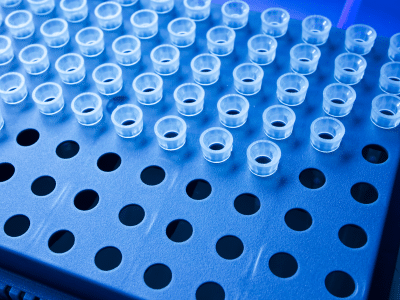Why must you absolutely respect the control and storage rules ? Laboratory glassware is considered fully ready for re-use after it has been visually inspected and stored in accordance with procedures.
Indeed, machine processing is not the final step and is not sufficient to consider glassware as clean.
CONTROL
Remove the glassware from the processing machine
Regarding the so-called sensitive areas of activity (microbiology, genetic research, ultra-trace analysis), sterile disposable gloves are mandatory to avoid contamination of laboratory glassware.
All glassware in the laboratory must be completely dry before being stored. If drying is not complete, further drying in an oven at 100°C is necessary.
If, when the material is removed, traces, residues or deposits are found, the glassware in question must be re-treated.
Please note: before starting a new treatment, it is important to find the cause of the bad washing to avoid contamination of the glassware.
Visual inspection
When removing the glassware from the machine or just before use, place the glass in the light to detect any damage or deposits.
- Traces of residue : look for the cause to avoid contamination from the machine and then re-process in the machine (if necessary re-process).
- Glass damage : remove damaged material from laboratory use by placing it in the dedicated collectors.
STORAGE
Transport of glassware
Once the material is clean, and immediately after removal from the machine, it must be transported to the storage area, in transport baskets or any other auxiliary means that allow safe transfer without risk of contamination.
Storage location
Processed laboratory glassware is not always used immediately. Therefore, it should be stored in a designated area.
Storage conditions :
- Dry place with a temperature between 20 and 30°C
- No contact with sunlight
- Cabinets or drawers that protect from dust
- Stable shelves
- Consistent spacing of glassware for contact-free removal
- Stacking is strictly prohibited
- No direct contact with doors and walls of cabinets/drawers
Other tips :
- Preferably store with the bottom of the glassware facing upwards
- Store threaded bottles with the cap slightly screwed on
- Avoid seizing the caps of sloping-necked bottles by sliding a paper strip between the two
You now have all the keys in hand to process your laboratory glassware in the right way !
Indeed, you now know that the treatment of laboratory glassware must follow several steps such as pre-treatment before washing in a machine and finally control and storage.
You can also share your tips and tricks with the whole laboratory community in comments…




